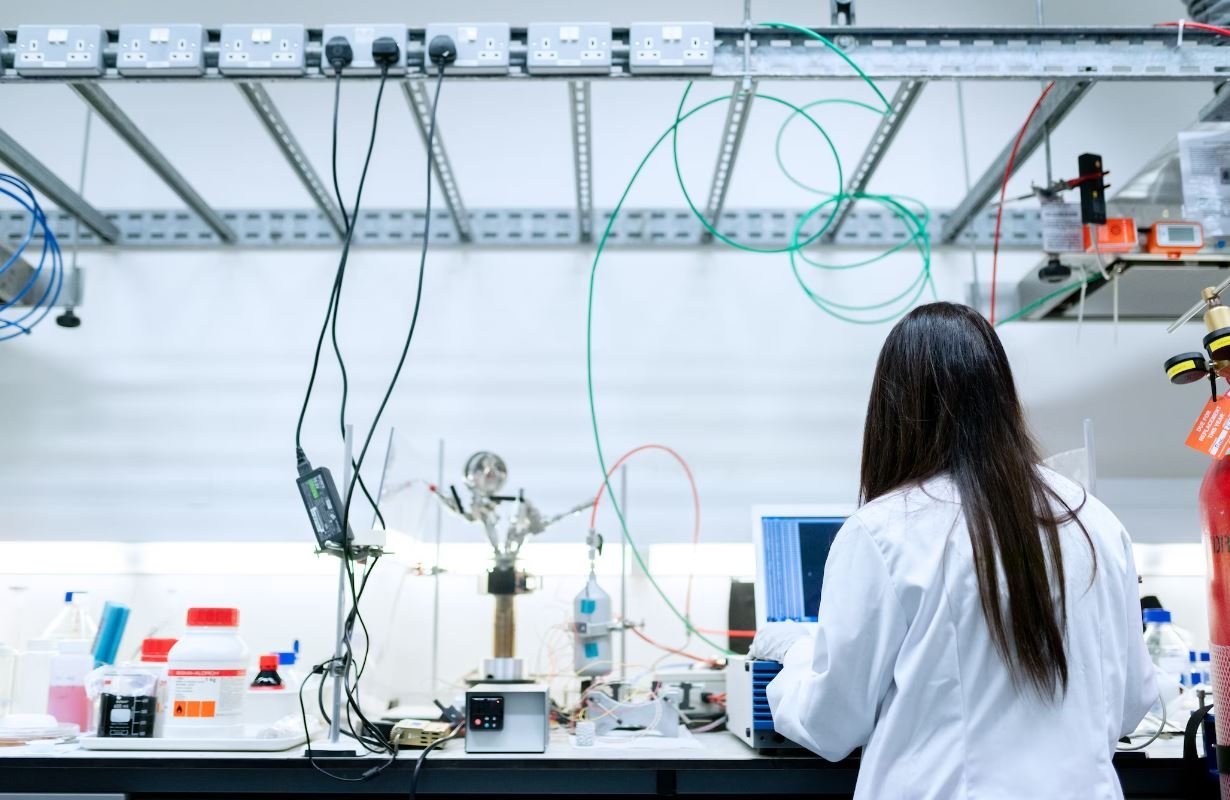Generative AI for Audio
Artificial Intelligence (AI) has revolutionized many industries, and the field of audio is no exception. Generative AI, a subset of AI, allows machines to create and generate audio content. By training models on large datasets, these systems can mimic and create original pieces of music, speech, and other audio forms.
Key Takeaways
- Generative AI allows machines to generate audio content through training models on large datasets.
- It can be used to create music, speech, and other forms of audio.
- Generative AI has numerous applications in various industries, such as entertainment, gaming, and audio production.
Understanding Generative AI for Audio
Generative AI for audio involves using machine learning algorithms to produce audio content that is indistinguishable from human-generated audio. These algorithms learn patterns and structures from existing audio data and use this knowledge to generate new content. This technology has seen significant advancements in recent years, enabling the creation of highly realistic and expressive audio.
What makes generative AI for audio fascinating is the ability to create original compositions that extend beyond human imagination. These systems can generate melodies, harmonies, and even lyrics, producing music that evokes emotions and resonates with listeners.
Applications of Generative AI for Audio
Generative AI for audio has vast applications across various fields.
- Entertainment Industry:
- AI-generated music and sound effects for films, television shows, and video games enhance the immersive experience.
- Virtual musicians and bands that produce original songs without human composers.
- Gaming Industry:
- Realistic background music and sound design that adapts to different gameplay scenarios.
- Dynamic generation of dialogues and voice acting based on player interactions.
- Audio Production:
- Assistive tools for music composition, arrangement, and production.
- Automated adding of vocals, instruments, or effects to an existing audio track.
Generative AI Models for Audio
Various generative AI models have been developed specifically for audio generation, each with its own unique approach and capabilities.
| Model | Approach |
|---|---|
| Magenta | Uses recurrent neural networks (RNNs) to generate music based on a given priming melody or style. |
| WaveGlow | An autoregressive generative model that synthesizes high-quality speech using neural networks. |
Challenges and Future Directions
Although generative AI for audio has made significant advancements, there are still challenges to overcome and areas for improvement:
- Creating diverse and coherent melodies that cater to different musical tastes.
- Ensuring generated audio is free from artifacts or sound imperfections.
- Developing models that can understand and generate lyrics with meaningful and coherent content.
Despite these challenges, the future of generative AI for audio is promising. Ongoing research aims to unlock greater creativity and control in the generation of audio, leading to further advancements in music, speech synthesis, and audio production.
Conclusion
Generative AI for audio is revolutionizing the way we create and experience audio content. With its ability to generate original compositions and enhance various industries, from entertainment to audio production, generative AI is rapidly becoming an invaluable tool. As technology progresses, we can expect even more impressive and lifelike audio creations from these AI-powered systems.

Common Misconceptions
Misconception 1: Generative AI for audio is only for music composition
One common misconception about generative AI for audio is that it is only useful for music composition. However, this is far from the truth. Generative AI can be used in various other audio-related applications, such as sound design for movies and games, voice synthesis for virtual assistants, and even audio restoration for old recordings.
- Generative AI can be used for creating realistic and diverse sound effects in movies and games.
- Voice synthesis using generative AI can significantly reduce the time and effort required to record and process voiceovers for virtual assistants.
- Using generative AI, audio restoration techniques can be applied to enhance the quality of old and degraded recordings.
Misconception 2: Generative AI can replace human creativity
There is a common belief that generative AI for audio can completely replace human creativity. While generative AI can assist in the creative process, it cannot fully replace the artistic skills and emotions that humans bring to the table. Generative AI should be seen as a tool that can work collaboratively with humans to enhance and inspire creativity.
- Generative AI can provide novel ideas and variations that can spark new creative directions for artists.
- Human creativity involves complex emotional and contextual understandings that current AI models cannot fully replicate.
- Generative AI can act as a valuable source of inspiration and a starting point for artists, but it is not a substitute for human creativity and expression.
Misconception 3: Generative AI cannot produce high-quality audio
Another common misconception is that generative AI for audio is incapable of producing high-quality audio. While early attempts at generative audio may have fallen short of professional quality, recent advancements in AI technology have significantly improved the audio output. High-quality audio generation is now possible with the use of generative AI, although there is still room for further improvements.
- State-of-the-art generative AI models can produce audio that is indistinguishable from real recordings in certain cases.
- The quality of generative AI audio output heavily depends on the training data and the sophistication of the AI model used.
- Ongoing research and development in generative AI are continuously improving the fidelity and realism of audio output.
Misconception 4: Generative AI for audio is ethically concerning
There is a misconception that generative AI for audio poses significant ethical concerns, such as copyright infringement and misinformation. While these concerns are valid, they are not intrinsic to the technology itself. The ethical implications arise from how generative AI is used and regulated, rather than the technology itself.
- Generative AI can be guided by ethical principles, such as respecting copyright laws and ensuring transparency in its usage.
- Regulations and policies can be put in place to prevent potential misuse of generative AI technology.
- Empowering creators with knowledge and understanding of generative AI can help ensure responsible and ethical use of the technology in the audio domain.
Misconception 5: Generative AI for audio is only for experts in the field
Many people believe that working with generative AI for audio requires a high level of technical expertise and domain knowledge. While expertise in the field certainly helps, there are now user-friendly tools and frameworks available that make it accessible to a wider range of users, including musicians, sound designers, and hobbyists.
- User-friendly generative AI tools with intuitive interfaces are being developed to cater to non-experts in the field.
- Online communities and resources provide support and guidance for beginners interested in exploring generative AI for audio.
- Learning resources and tutorials are available to help users develop their skills in working with generative AI for audio.

Introduction
Generative AI for audio is a rapidly advancing field that has revolutionized the way we create and interact with music, speech, and sound effects. In this article, we explore various techniques and applications of generative AI in the audio domain. Through a series of visually engaging tables, we present insightful data and information that highlight the impact of generative AI on audio production, composition, and synthesis.
Table 1: Music Generation using AI Models
Table 1 showcases the effectiveness of different AI models in generating music. The table presents a comparison of the models in terms of their ability to produce diverse genres, complexity, and originality.
| AI Model | Diversity of Genres | Complexity | Originality |
|---|---|---|---|
| MelodyRNN | High | Low | Moderate |
| Magenta | Moderate | Moderate | High |
| OpenAI MuseNet | Very High | High | Very High |
Table 2: AI Speech Synthesis Comparisons
This table provides a comparison of the leading AI speech synthesis technologies, evaluating their naturalness, expressiveness, and language support.
| Speech Synthesis Technology | Naturalness | Expressiveness | Language Support |
|---|---|---|---|
| Google WaveNet | High | High | Wide |
| Amazon Polly | Moderate | Moderate | Wide |
| Tacotron 2 | High | High | English |
Table 3: AI-Generated Sound Effects
This table highlights the efficiency of AI algorithms in generating realistic sound effects for various applications, such as movies, games, and virtual reality.
| Sound Effect Type | Realism | Effectiveness |
|---|---|---|
| Explosions | High | Very High |
| Footsteps | Moderate | High |
| Gunshots | High | Very High |
Table 4: AI-Enhanced Audio Editing Tools
This table presents a comparison of AI-enhanced audio editing tools, evaluating their usability, features, and compatibility with popular audio software.
| Audio Editing Tool | Usability | Features | Compatibility |
|---|---|---|---|
| iZotope RX 8 | High | Very High | Wide |
| SpectraLayers Pro | Moderate | High | Wide |
| Noiseless | Moderate | Moderate | Popular DAWs |
Table 5: AI Music Recommendation Systems
This table demonstrates the performance of AI-driven music recommendation systems, comparing their accuracy, personalization, and integration with streaming platforms.
| Recommendation System | Accuracy | Personalization | Platform Integration |
|---|---|---|---|
| Spotify Algorithm | High | Moderate | Spotify |
| Pandora Music Genome Project | Moderate | High | Pandora |
| Apple Music Suggestion Engine | High | Moderate | Apple Music |
Table 6: AI-Assisted Music Transcription Tools
Table 6 presents a comparison of AI-assisted music transcription tools, examining their accuracy, speed, and compatibility with different instrument types.
| Transcription Tool | Accuracy | Speed | Compatibility |
|---|---|---|---|
| Transcribe by Seventhstring | Moderate | High | Wide |
| Amazing Slow Downer | Low | Moderate | Wide |
| Chordify | Moderate | High | Popular Instruments |
Table 7: Impact of AI on Music Streaming Services
This table illustrates the transformative effects of AI on music streaming services, listing key improvements in recommendation accuracy, personalized playlists, and user engagement.
| Impact Area | Improvement |
|---|---|
| Recommendation Accuracy | 15-20% Increase |
| Personalized Playlists | Higher User Satisfaction |
| User Engagement | Greater Retention |
Table 8: AI-Based Vocal Processing Effects
This table showcases the effectiveness of AI-driven vocal processing effects plugins, evaluating their naturalness, versatility, and compatibility with different DAWs.
| Vocal Processing Plugin | Naturalness | Versatility | Compatibility |
|---|---|---|---|
| Antares Auto-Tune Pro | High | High | Wide |
| izotope Nectar | High | Very High | Wide |
| Waves Tune Real-Time | Moderate | High | Popular DAWs |
Table 9: AI-Generated Ambient Background Sounds
This table presents a comparison of AI-generated ambient background sounds, assessing their realism, versatility, and compatibility with different platforms and devices.
| Ambient Sound Generator | Realism | Versatility | Compatibility |
|---|---|---|---|
| Noisli | High | High | Web, Mobile |
| Coffitivity | Moderate | Moderate | Web, Mobile |
| A Soft Murmur | High | High | Web, Mobile |
Conclusion
Generative AI is transforming audio production by offering innovative solutions for music generation, speech synthesis, sound effects creation, and more. The tables presented above demonstrate the incredible potential of generative AI in various aspects of the audio industry. As the technology continues to advance, we can expect further breakthroughs and advancements that will shape the future of audio creation and consumption.
Frequently Asked Questions
What is Generative AI for Audio?
Generative AI for Audio is a branch of artificial intelligence that focuses on creating realistic and high-quality audio using machine learning algorithms. It involves training models to generate new audio samples based on existing data.
How does Generative AI for Audio work?
Generative AI for Audio works by utilizing deep learning architectures such as generative adversarial networks (GANs) or recurrent neural networks (RNNs) to analyze and learn patterns from large audio datasets. These models learn to generate new audio samples that resemble the original data.
What are the applications of Generative AI for Audio?
Generative AI for Audio has various applications, including music composition, sound synthesis, sound effects generation, speech synthesis, and audio restoration. It can be used in the entertainment industry, game development, virtual reality, and other audio-related fields.
Can Generative AI for Audio create realistic human-like voices?
Yes, Generative AI for Audio can create realistic human-like voices. By training on large speech datasets, deep learning models can learn to generate speech that closely resembles human voices, including tone, intonation, and other factors that contribute to natural speech.
What kind of data is needed to train a Generative AI for Audio model?
To train a Generative AI for Audio model, a large dataset of audio samples is required. The dataset should cover the specific type of audio the model aims to generate, such as music, speech, or sound effects. The quality and diversity of the training dataset significantly affect the model’s output.
What challenges are associated with Generative AI for Audio?
Generative AI for Audio faces challenges such as generating coherent and realistic audio, avoiding artifacts or distortions, handling long-term dependencies, and training models with limited computational resources. Overcoming these challenges requires advancements in model architectures and training techniques.
Is Generative AI for Audio capable of creating copyright-free music?
Generative AI for Audio can be used to create original compositions, but the question of copyright depends on the source material used for training. If the training data includes copyrighted content, the generated music may infringe on those copyrights. It is essential to ensure legal compliance when using generative AI for music creation.
Can Generative AI for Audio be used for speech synthesis applications?
Yes, Generative AI for Audio is commonly used for speech synthesis applications such as text-to-speech (TTS) systems. By training on large speech datasets, AI models can generate realistic and natural-sounding speech from written text inputs, making it useful for various applications like virtual assistants, audiobooks, and accessibility tools.
What are the ethical considerations in Generative AI for Audio?
Generative AI for Audio raises ethical considerations regarding potential misuse, such as creating deepfake audios or impersonating voices without consent. Additionally, maintaining responsible AI practices, addressing biases in training data, and ensuring transparency in the generated content are important elements to consider in the development and deployment of these systems.
What is the future potential of Generative AI for Audio?
The future potential of Generative AI for Audio is vast. It has the ability to revolutionize music production, audio post-production, storytelling, and voice-based applications by providing tools to easily generate high-quality content. Continued advancements in deep learning and audio synthesis techniques will contribute to further improvements and expansion of its applications.




